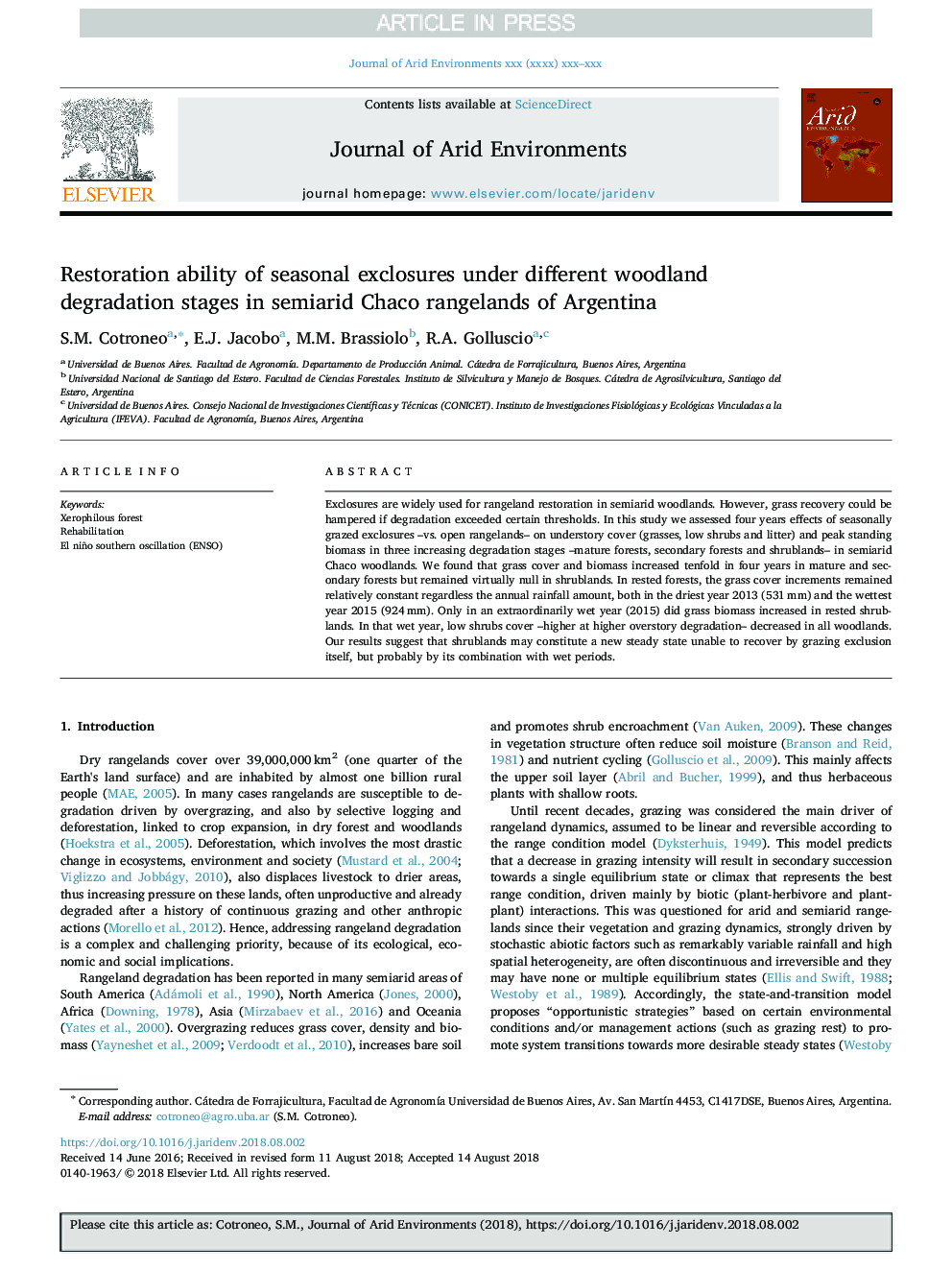| Article ID | Journal | Published Year | Pages | File Type |
|---|---|---|---|---|
| 8965894 | Journal of Arid Environments | 2018 | 7 Pages |
Abstract
Exclosures are widely used for rangeland restoration in semiarid woodlands. However, grass recovery could be hampered if degradation exceeded certain thresholds. In this study we assessed four years effects of seasonally grazed exclosures -vs. open rangelands- on understory cover (grasses, low shrubs and litter) and peak standing biomass in three increasing degradation stages -mature forests, secondary forests and shrublands- in semiarid Chaco woodlands. We found that grass cover and biomass increased tenfold in four years in mature and secondary forests but remained virtually null in shrublands. In rested forests, the grass cover increments remained relatively constant regardless the annual rainfall amount, both in the driest year 2013 (531â¯mm) and the wettest year 2015 (924â¯mm). Only in an extraordinarily wet year (2015) did grass biomass increased in rested shrublands. In that wet year, low shrubs cover -higher at higher overstory degradation- decreased in all woodlands. Our results suggest that shrublands may constitute a new steady state unable to recover by grazing exclusion itself, but probably by its combination with wet periods.
Related Topics
Physical Sciences and Engineering
Earth and Planetary Sciences
Earth-Surface Processes
Authors
S.M. Cotroneo, E.J. Jacobo, M.M. Brassiolo, R.A. Golluscio,
